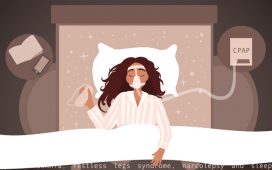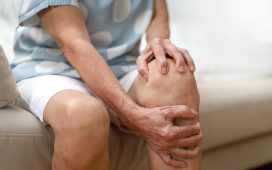OK, PHYSICIANS! It’s time to align your practice with what Millennials say they want from healthcare. These 24 to 39 year olds (as of 2020) aren’t kids anymore – that would be Gen Z – and they wield serious purchasing strength. Because of their muscle, analysts continue to analyze everything these 83 million Americans do – from what they drink (survey says: make theirs a hard seltzer, preferably White Claw), to what they eat (survey says: pass the CBD-infused food), to their healthcare preferences (survey says: the nod goes to on-demand medical clinics).
If you’re a PCP, family practitioner, nurse practitioner, general practitioner, physician assistant, or internist working in a traditional office-based medical practice, you already know that last nugget. Millennials aren’t drawn to you professionally. If you need the latest stats, a 2018 report revealed that 45 percent of our nation’s largest generation has no PCP and a 2017 report put that figure at 35 percent – which means Millennials are increasing their distance from primary healthcare providers.1
More than any other generation, they’re addressing pressing medical needs in urgent care and walk-in clinics, where evaluating an ache or pain comes with online connectivity, unbeatable convenience, price transparency, and exceptional speed – benefits not typically linked to the time-honored doc’s office.2, 3
Now let’s toss in another Millennial-driven trend: a penchant for wellness programs. Millennials are often credited with driving the wellness trend, a market now valued at $4.2 trillion globally.4 In addition, a recent survey declared this generation most likely to participate in various aspects of wellness and preventative care, such as programs focused on smoking cessation, stress management, and activity-based wellness challenges.2
So, if you’re looking to maintain – or build – a practice model based on tradition but customized for 2020, then consider tweaking your MO. Begin by adding the best of no-appointment-necessary, on-demand clinics. Next, introduce ways Millennials can participate in their own personal health and wellbeing.
If reinventing your practice sounds too time-consuming, there are digital healthcare companies out there that will do the heavy lifting for you. One in particular is higi,5 which we won’t endorse over other digital solutions, but we can certainly share info.
Chicago-based higi manufactures an FDA-cleared, wheelchair accessible, smart health station, currently located in about 11,000 pharmacies, club stores, community locations, grocery stores, and employer worksites nationwide. The kiosk prompts users to take and record their vital signs, including blood pressure, height, and weight, and also answer “lifestyle” questions. The higi platform then converts data into a single “HigiScore,” which represents the user’s overall wellness – or un-wellness.
Users can choose to anonymously take their vital signs and walk away; create an account and store data in the cloud to review online, on a smartphone, or from a wearable device; or create an account and forward data directly to a chosen physician or healthcare system. So you may only see a patient once a year but in between appointments you receive unique patient data. Imagine texting a patient something like Great job hitting a healthy weight or Blood pressure is high. I recommend coming in to discuss solutions.
“This is healthcare on demand that promotes interacting with a physician – but only as needed,” says Jeff Bennett, higi CEO. “So the program accommodates different people at different points in their health journey. For example, higi gives younger Millennials touchpoints between doctor visits, which may be fine since this demographic isn’t typically dealing with acute health issues and might not need – or want – a consistent relationship with a doctor. Conversely, if someone does have a potential or existing health issue, they can track their health data at a higi kiosk, transmit data to their doctor, and skip making an appointment unless intervention is necessary.”
A recent addition to the higi assessment platform is brain health, which embraces behavioral health. “One in two women tell us that they’re less happy than happy. That’s something a patient might not tell their physician – maybe because they’re embarrassed to share something like that or there just isn’t enough time during a usual doctor visit,” Bennett explains. “If a physician receives real-time data that indicates a patient may be depressed, that doctor can reach out with an appropriate response and the right resources to mitigate a potentially dangerous situation.”
By the way, higi users can also upload their data into any of several programs to receive immediate educational content pertinent to a specific health issue and also join communities for support in health management, such as weight loss or exercise routines. It ties nicely with the Millennials’ interest in developing and maintaining healthy habits.
This is by no means the only way patients can track and share real-time health data with a physician. There are other kiosk-type concepts out there as well as increasingly popular wearables, with a quarter of U.S. adults, or 56.7 million, saying they used a wearable device at least once a month in 2019.6 Over time, these devices may surpass grocery store smart stations in convenience and reliability – but not yet.7 For now, it seems that the best place for your patients to capture dependable, sharable health data on-demand is eight aisles over from the fresh produce section and around the corner from shampoo.
Resources
3) Bhuyan, N. (2018, October 22). Millennials Don’t Have PCPs; Here’s Why They Should.
6) Wurmser, Y. (2019, January 3). Wearables 2019.
7) News Center. (2017, May 24). Fitness trackers accurately measure heart rate but not calories burned.







